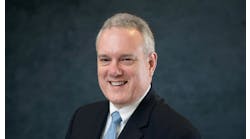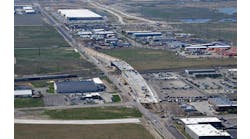By Gavin Jenkins, Senior Managing Editor
Susan Martinovich has built a significant career. As a Department of Transportation (DOT) National Practice Lead for HNTB, she facilitates and shares best practices to help foster DOT staff relationships.
For nearly three decades, Martinovich worked for the Nevada DOT. She served two governors there as DOT Director from 2006 to 2012. She also served nine years as Deputy Director/Chief Engineer. At the time, there were only two women chief engineers in the country. She also was the first woman to be president of AASHTO.
As NDOT Director, Martinovich created a leadership training program and oversaw several of Nevada’s largest projects, including the Hoover Dam Bypass Bridge and the Interstate-580 connection between Reno (I-80) and Carson City. Nevada’s first design build contract on I-15 was successfully bid and completed, as well.
Martinovich currently serves as chair of ARTBA’s Women Leaders Council and as Vice-Chair of TRB Committee - Data for Decision Makers. She graduated with a BSCE from University of Nevada, Reno and is a registered PE. She has two sons, one of whom followed her into civil engineering. The other son is a retired Marine who was wounded in Afghanistan. He received a Purple Heart from President Obama.
In April, I met with Martinovich over video to talk about a wide range of topics. The following Q&A was edited and condensed for this article:
Safety is a passion of yours. How can we reduce road fatalities?
I am a big believer that it starts with us as individuals. We must set the example. It's going to take some hard decisions, as well. State legislatures need to be partners and support laws that allow for technology enforcement. Everyone’s so worried about being caught going over the speed limit or running a red light, but if you're breaking the law, you’re breaking the law. Thirty-one percent of all fatal crashes in Nevada were speed related. In 2019, there were over 3,500 citations given for going over 100 miles an hour, and in 2021 the number grew to 5,137. Unfortunately, we don’t have the manual resources for consistent enforcement, and this is where technology can bring value.
You serve on ARTBA’s Women Leaders Council. What steps need to be taken to welcome more women into the roads and bridges construction industry?
We need to make it inviting and easy for all people to get into the construction and engineering workforce. I think having women and minorities visible really helps. If I had gone into a place early in my career and had seen other women, then I would have known I was OK—that this was something that I could do. I've had a lot of young women say to me, “I didn't know it was possible that I could do your job.” We as an industry need to prioritize having diverse panels and increase diversity in leadership positions so those who see us, see themselves. Men can help become mentors and, more importantly, sponsors. When a woman is not in the room, somebody needs to speak up and say, “Hey, let's bring in so and so.” Men must be part of the solution.
What are some of the biggest challenges that DOTs face today?
The biggest challenge is workforce. We have a lot of retirements occurring , and we don’t have as many people coming into the industry. DOTs can showcase transportation isn’t a blast from the past, but rather a road to the future. The incoming workforce needs to appreciate that they have the ability to touch people’s lives. Rapidly changing technology is also challenging. While the technology is wonderful, there is still the need to attract talent. New equipment is more automated and we need people with different skill sets. DOTs must integrate and understand the different generations’ values and knowledge. I believe this industry is struggling to react to how to address today while also working to be pro-active in addressing tomorrow.
You’ve overseen some of the biggest infrastructure success stories in Nevada history. When you have a large team from various organizations working on a project, how do you get everyone on the same page?
Collaboration and communication. You must bring people together, and then define who’s going to do what and by when and that there are consequences associated with action and non-action. And don’t be afraid to make decisions. Keep communications open. It’s also important to ensure people feel valued for their contributions. Giving people the responsibility and authority to keep the job moving. R&B



